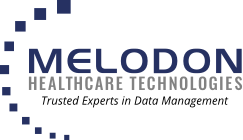Data and Software that Enrich the Lives of Patients and Providers
Healthcare has transformed drastically over the past decade. Advancements in technology and medicine, as well as state and federal regulations have had a profound impact on not only healthcare systems but patients and insurance providers alike. Total healthcare costs increased 4.5% from 2018 to 2019 and are projected to keep rising through 2021. As the medical industry is faced with new challenges, such as a rapidly aging population and COVID-19, it is critical that healthcare providers harness the power of technology. Doing so allows them to improve healthcare costs and services for themselves, and more importantly, their patients.
Healthcare Bottlenecks
According to a recent study conducted by the Journal of the American Medical Association (JAMA), the U.S. healthcare system wasted nearly $1 trillion in 2019 healthcare expenditures; a year-over-year increase of about 20-25%. Problematic areas that attributed to the greatest waste included:
- Failure of Care Delivery: estimated at $78.2 billion
- Fraud and Abuse: estimated at $83.9 billion
- Overtreatment or Low-Value Care: estimated at $101.2 billion
- Failure of Care Coordination: estimated at 165.7 billion
- Pricing Failure: estimated at $240.5 billion
- Administrative Complexity: estimated wasted spend of $265.6 billion
As the largest bottleneck in the healthcare system, administrative complexities attract a lot of attention and are a key area for of which healthcare providers are looking to improve costs through the implementation of new and existing technologies.
Rising to the Challenge
The pursuit of technology-driven efficiencies continues to expand. Provider, Patient, supply chain, and the insurer are no longer in their own silos; they are all interconnected.
Healthcare networks both large and small need to establish an integrated approach. As networks grow in size, so do their data sets. The ability to connect data systems and decipher information quickly is not only more profitable, but can be the difference between life and death.
Some of the ways healthcare providers are improving healthcare costs and overall operating efficiencies include:
- Streamlining Manual Processes – Physicians need to be spending less time dealing with tedious administrative tasks and spending more time with their patients. A recent survey found that 71% of doctors have reported feeling burned out over the past year. Implementing Healthcare Data Migration and Decision Support technologies help doctors streamline their ability to document or “scribe” electronic health records (EHR), reducing burnout and allowing them to spend more time with their patients. Other common tasks that can be expedited may include claims processing and billing.
- Customized Healthcare Software – One of the most important parts of managing healthcare costs is developing healthcare software that fits the unique needs of an organization. Custom healthcare software solutions provide healthcare systems the framework to scale seamlessly while protecting sensitive data, maintaining HIPPA compliance, and enhancing the lives of doctors, nurses, administrative staff, and patients alike.
- Healthcare in Your Pocket – Mobile end web application development is having a profound impact on the industry benefiting patients, systems, and providers. Allowing a patient to virtually manage medical appointments, monitor their subscriptions, medications, etc., and connect with a medical provider 24/7 both improve overall patient satisfaction and reduces overall healthcare costs.
Don’t Sacrifice Quality for Quantity
The automation of workflow and administrative processes allows complex healthcare systems to meet current and future demands. With healthcare costs expecting to rise over 5% each year for the next decade, implementing the use of technology to improve healthcare costs is no longer an option, it’s a necessity.
If you are looking for ways to improve the delivery of healthcare, contact Melodon Healthcare Technologies and see what healthcare technology can do for your organization.
